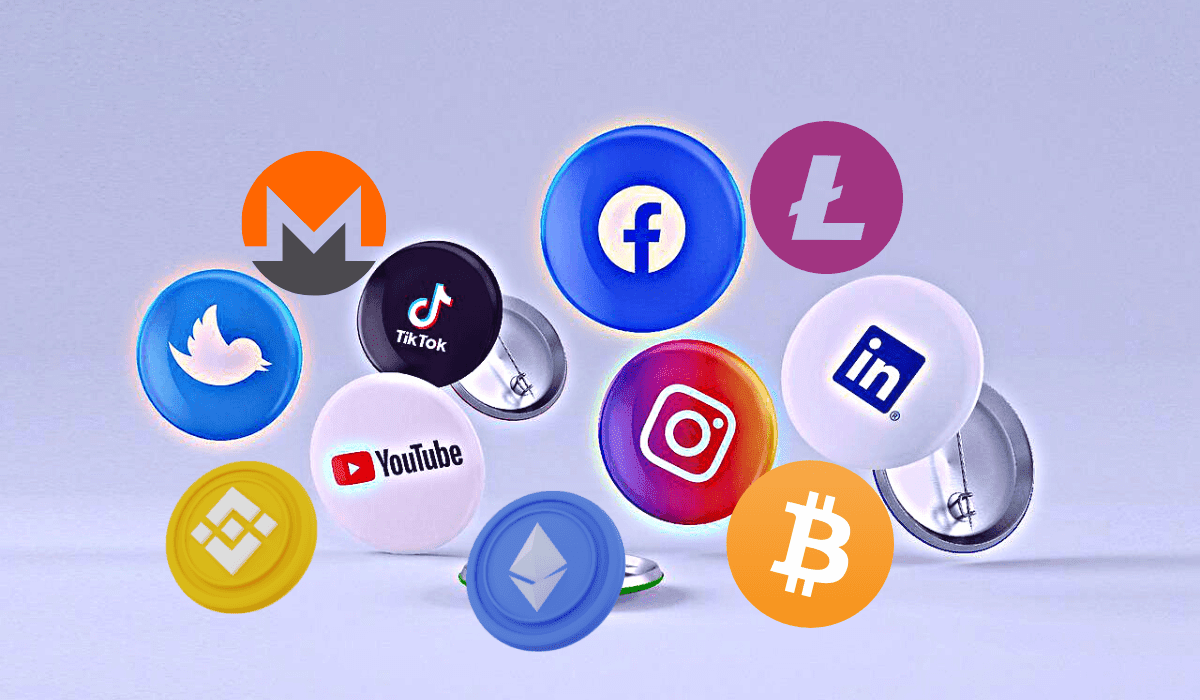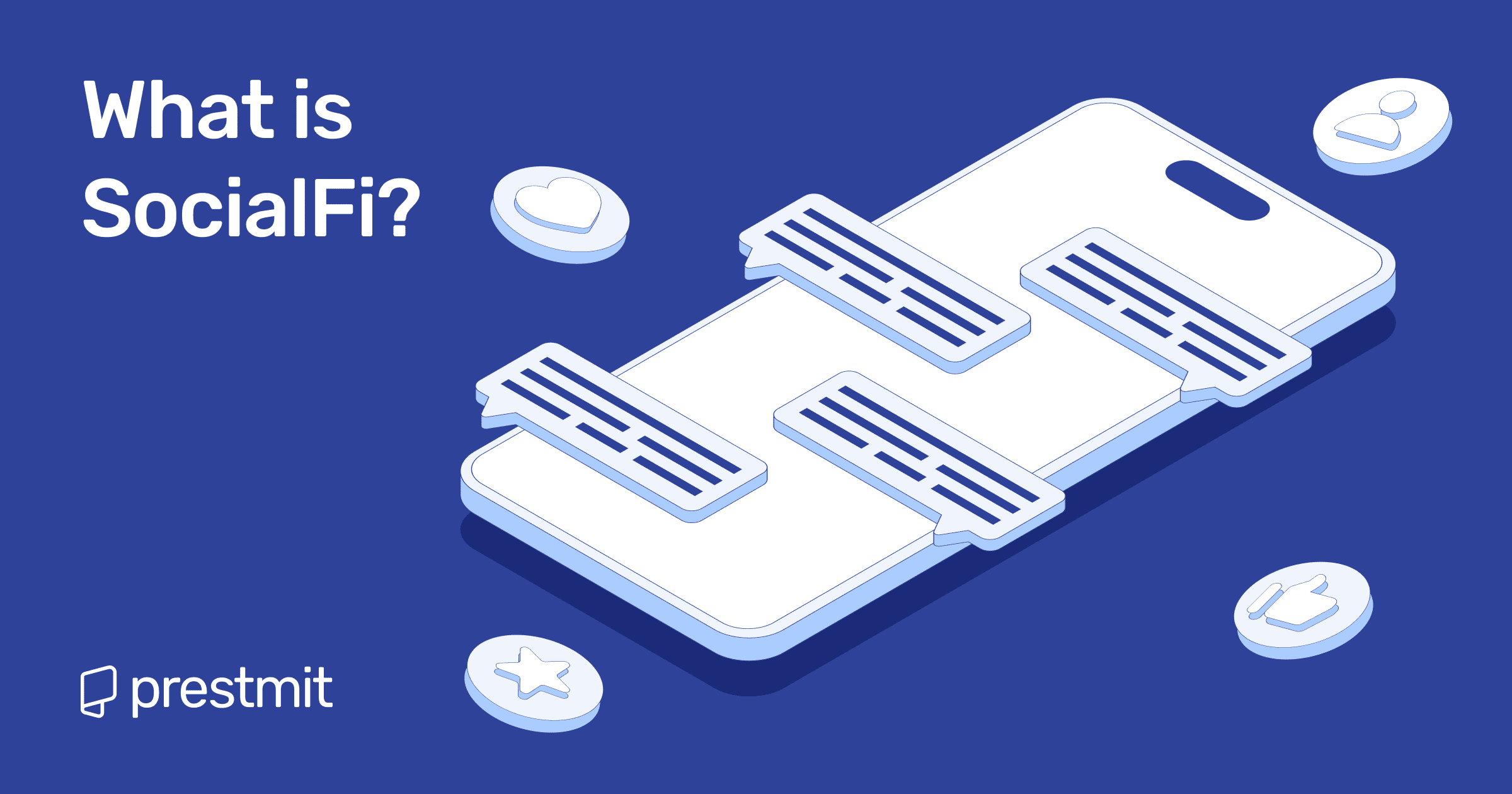Table of Contents
Think about the hours you spend scrolling, posting, and liking on social media. Now, think about how much of that value actually comes back to you. The honest answer? Almost zero. The social media platforms rake in billions from ads, your data is sold like hotcakes, and you’re left with nothing but dopamine hits, a follower or two, and maybe a blue checkmark if you pay for it.
But what if social media worked differently? What if every like, post, or comment could actually earn you something real, instead of just clout? That’s the big promise of SocialFi, a new wave of online communities powered by blockchain, and it could change the internet as we know it.
What Is SocialFi?

SocialFi, short for Social Finance, is a blockchain-powered version of social media that gives users true ownership of their content, identity, and earnings.
Unlike traditional platforms where companies control your data and profit from your activity, SocialFi hands that power back to you. Posts can be turned into NFTs, interactions can generate tokens, and communities can govern themselves through DAOs (Decentralized Autonomous Organizations).
In simple terms, it is social networking where you actually own what you create and get rewarded for it.
Why Does SocialFi Matter?
SocialFi matters because it challenges the way platforms, creators, and communities interact by putting users back at the center.
Traditional social media may be fun, but it comes with some serious flaws. You create the content, spend the time, bring the energy, yet the platform takes most of the value. Your data is collected, sold, and used to target you with ads. Creators pour in hours of effort but get only a fraction of the money their content generates. And the rules? They’re decided by centralized companies with little room for your input.
SocialFi steps in as a possible fix to all this, shifting power away from corporations and giving it back to the people who actually make social media what it is: the users.
How Does SocialFi Work?
1. Smart Contracts Automate Everything
Smart contracts are bits of code stored on the blockchain. They kick in automatically when certain conditions are met. On SocialFi platforms, they handle things like paying creators when their content gets likes or distributing tokens during community votes, no middleman required.
2. Tokens Fuel the Ecosystem
Most SocialFi platforms have their own native tokens. These can be used to reward creators, tip other users, or even buy exclusive content. Think of them as the currency of engagement, but unlike likes on Instagram, they actually hold value.
3. NFTs Turn Content into Assets
When you post on SocialFi platforms, your content can be minted as an NFT, making it unique and tradeable. On Lens Protocol, for example, a short post (similar to a tweet) can be minted as an NFT that followers can collect or resell. That means each meme, song snippet, or blog post becomes not just content, but an asset you own.
4. DAOs Handle Governance
Instead of a single company deciding what’s allowed and what’s not, SocialFi platforms often use DAOs (Decentralized Autonomous Organizations). Token holders get voting rights, which means users decide on things like platform upgrades, policies, or even which creators should be rewarded more.
5. Scalable Blockchains Keep Things Running
All of this runs on blockchains like Ethereum, Solana, or purpose-built networks such as DeSo. Some platforms also use Layer 2 solutions to cut down on gas fees and make interactions faster. That’s what allows thousands of likes, posts, and trades to happen smoothly.
6. Wallets Power Your Identity
To tie it all together, you connect your Web3 wallet (like MetaMask) to the platform. Your wallet acts as your ID, your bank account, and your content locker, giving you full control.
What Are the Benefits of SocialFi?
1. Real Ownership of Content
On Web2 platforms, your content lives on borrowed land. The company can delete it, block it, or profit from it without your say. With SocialFi, you’re the boss of your digital identity. No one can take your content away or quietly cash out behind your back
2. Fair Monetization
On traditional platforms, creators chase likes, views, and maybe the hope of an ad deal. On SocialFi, every bit of engagement can translate into real value. That might be tokens dropping straight into your wallet, posts minted as NFTs, or even launching your own tokenized fan club where supporters buy in directly. It’s a system built to reward creators fairly, without middlemen taking the biggest cut.
3. Transparency & Trust
Ever felt like the algorithm was working against you? With SocialFi, interactions run on blockchain and smart contracts, which means the rules are out in the open. You decide what’s public, what’s private, and how much you want to share, not the platform. Everything is traceable and verifiable, building trust between users and platforms.
4. Community-Driven Platforms
Through DAOs, users get a say in how the platform is run. This means that big decisions, from deciding new features to shaping policies, or even who gets banned, can be decided by collective vote. Power shifts from boardrooms to the people who actually use the platform.
5. Global Access and Inclusion
SocialFi platforms are open to anyone with an internet connection and a wallet. This levels the playing field for creators worldwide, even in places where traditional monetization options are limited.
Potential Challenges of SocialFi
1. Scalability Issues
Blockchains aren’t always fast or cheap. SocialFi platforms need to process millions of likes, posts, and comments in real time, but most blockchains today can’t handle that scale affordably. Until faster chains or scaling solutions are widespread, SocialFi will struggle to match giants like Instagram or TikTok.
2. Learning Curve
If you’ve ever struggled to set up a crypto wallet, you already know the problem. For everyday users, things like seed phrases, gas fees, and private keys can feel like a foreign language.
Friend. tech showed both the promise and the problem when thousands of users joined, but many dropped out quickly because the setup felt too complicated. Until SocialFi is as simple as signing up with an email, mainstream adoption will be tough.
3. Security Risks
Blockchain itself is secure, but people aren’t. Scams, phishing links, and wallet hacks are still everyday risks. And unlike traditional platforms, there’s no “Forgot Password?” button. Once your keys are gone, so is everything in your account. As SocialFi grows, attackers will have even more reason to target users.
4. Regulation Uncertainty
SocialFi sits right at the crossroads of two industries regulators care deeply about: social media and finance. This makes it a moving target for rules and restrictions and means Platforms could face sudden compliance demands, regional bans, or ongoing gray areas that discourage investors. Until clearer rules emerge, SocialFi projects may find it hard to plan for the long term.
5. Sustainability of Rewards
Early SocialFi platforms often lure users with generous token rewards, but handing out free money forever isn’t realistic. We saw this play out with Axie Infinity: the play-to-earn game boomed, then crashed when its token economy couldn’t keep up. SocialFi faces the same challenge. Unless these platforms find genuine, lasting ways to create value, users will eventually move on to the next shiny trend.
Frequently Asked Questions (FAQs) About SocialFi
Will SocialFi replace traditional social media?
No, not anytime soon. Traditional platforms have billions of users and massive infrastructure. SocialFi is more likely to co-exist at first, serving people who care about ownership, privacy, and fair monetization, before it ever becomes mainstream.
Are there any successful SocialFi platforms right now?
Yes, there are a few successful early movers like Friend.tech, DeSo, and Lens Protocol, but none are anywhere near the scale of Instagram, Twitter, or TikTok. These projects show what’s possible, but SocialFi is still in its trial-and-error stage.
What are the risks involved in SocialFi?
Just like with any blockchain-based system, tokens you earn can lose value quickly, wallets can be hacked if you’re careless, and scams are common. Plus, platforms themselves are still experimental, so some may disappear if their economic models fail. You need to approach SocialFi with the same caution you would use in crypto investing.
How do I start using SocialFi?
Start small. You’ll need a crypto wallet (like MetaMask), some tokens for transaction fees, and an invite or signup on a SocialFi platform such as Friend.tech, Lens Protocol, or DeSo. Explore for free first, get comfortable with the features, and only then think about investing time or money.
How do SocialFi platforms make money if users are earning tokens?
SocialFi platforms make money through things like ad revenue, transaction fees, or marketplace fees. The difference is that instead of keeping everything, they share a portion of that value back with users.
How do SocialFi tokens work?
SocialFi tokens act as in-platform currencies. You can earn, trade, or use them for governance rights. Examples include DESO, MIND, and FRENS.
Conclusion
SocialFi is a glimpse into what the future of social networking could look like. A future where you own your data, earn from your content, and have a real voice in the communities you’re part of.
The road ahead isn’t without hurdles, but the potential is too bold to ignore. Whether SocialFi becomes the new standard or just one step toward something greater, one thing is clear: it will change the way we think about social media.
Last updated on October 6, 2025

